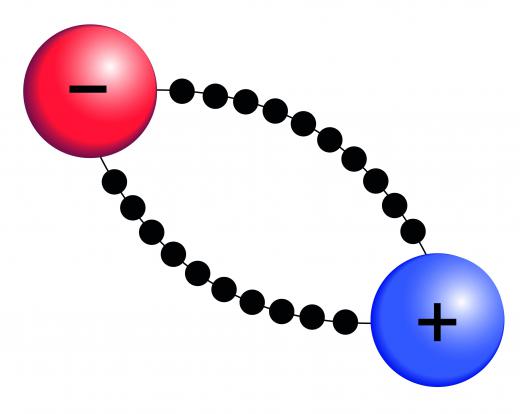What Is an Anode?
An anode is the electrode in an electrical system through which electrical current enters the system. Depending on the type of system, this electrode may be either positively or negatively charged, through in most cases, it has a positive charge. Anodes are a component of batteries and of electrically-charged tanks that are used to polarize or deposit layers of various metals. There are also a number of devices that use special types of electrodes, called sacrificial anodes, to protect other metal components.
Batteries, which are galvanic cells, use anodes to transmit energy from the chemical process on the inside of the cell to the device that requires power. Though most anodes are positively charged, in this case, the anode is the negative side of the battery. In these devices, the metal in this electrode slowly dissolves into the liquid as a part of the chemical reaction that takes place in the battery. Once the electrode has completely dissolved, the battery has no more power, though batteries that are capable of recharging will switch the function of the anode and cathode while charging, allowing the metal to be redeposited onto the anode.

Devices such as cathode ray tubes and diodes also make use of anodes. In these cases, anodes are on the positive side of the electrical system. Energy travels into these types of systems through the anode and leaves through the diode. While energy is entering the system in this manner, electrons are leaving the system through the anode.
Sacrificial anodes are used in devices such as water heaters. They get their name from the way it "sacrifices" itself to preserve other materials in the device, such as the metal tank of the water heater. The electricity used to power this type of device causes metal components to break down over time, so sacrificial anodes are placed into them to keep the other metal components from deteriorating. As long as the anode is made of a metal that is more "active" than the metal in the rest of the device, it will deteriorate instead of the other metals. In some cases, the presence of a less active metal can speed up the deterioration of the anode metal, which means they may need to be replaced more frequently.
AS FEATURED ON:
AS FEATURED ON:











Discuss this Article
Post your comments